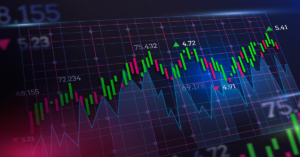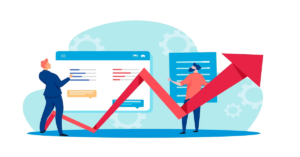Have you ever downloaded a stock screener or opened a brokerage account only to be required to sign a contract with a stock exchange about market data?
Data generated by exchanges belongs to them.
There are many trades per second on Apple (AAPL) stock, but they all take place on the stock exchange. You receive price data directly from the exchange and pay them to deliver it to you. Data on stock prices can be compared to a vacuum cleaner or an Xbox.
Stockbrokers and software providers are the only vendors who receive data from exchanges.
As a result, the vendor will either need to charge you for the data charges or subsidize them in the hope that you will do more business with them in the future.
How does a Market Data Agreement work?
Market data contracts are mostly used by stock exchanges for selfish reasons. It is important to ensure you don’t misuse their data, but their primary motivation is to charge you as much as possible.
Commercial and non-commercial pricing tiers are available on exchanges. Trading data is charged at much higher rates to professionals than to non-professionals, as you might expect.
These contracts ask you questions that determine your status as a “professional” or “non-professional” and your pricing level as a result.
Compliance-related issues are the focus of the remaining agreements.
Does your market data contract ask you any questions?
To determine whether the data is being used for anything other than personal purposes, these agreements ask you a series of questions. Market data that is not strictly personal use.
Are you using the data for commercial or business purposes?
These questions are intended to:
- Are you receiving financial information (including news or price data regarding securities, commodities, and other financial instruments) for your business?
- Do you trade securities, commodities, or forex on behalf of corporations, partnerships, trusts, professional investment clubs, or any other entity?
- Do you have any agreements for (a) sharing profits from your trading activities or (b) receiving compensation for them?
- In exchange for trading or serving as a financial advisor to any individual, firm, or business entity, do you receive office space, equipment, or other benefits?
Do you work as a financial professional?
- Do you currently work as a broker dealer or investment advisor?
- Invest in securities, commodities or forex as an asset manager?
- How are you currently using this financial information? Are you managing the assets of your employer or company?
- Does your business operate with capital provided by another person or entity?
Is your data distributed or published?
- Is any financial information from the Service being distributed, redistributed, published, made available, or otherwise provided to any third party?
Are you registered with the Financial Regulatory Agency/Board?
- Does your company have a registered or qualified professional securities trader program, or do you have an investment advisory license with a commodity or futures market, a regulatory authority, a professional association, or a recognized professional organization?
A professional standing evaluation is the focus of all four topics.
You are a professional and will be charged professional rates if data is the core part of your business, whether you are an asset manager, software professional, or proprietary trader.
Market Data Designation: Professional vs. Non-Professional
The term “commercial” has a completely different meaning in exchange market data contracts than our commonsense definition of “being paid to do something.”
Exchanges like the NYSE define ‘professional’ as those who use market data for strictly business purposes rather than personal uses. In this case, personal use is essentially a self-directed trade or investment solely for your benefit, rather than the corporation’s.
Your use-case may be non-professional and personal, but your job title or license will make you a professional.
Here is a list of possible situations where you might be considered a professional by Interactive Brokers:
- Accounts that are not owned by natural persons
- When the account is an ORG account
- An exchange, regulatory authority, professional association, or recognized professional body may register/qualify the user.
- As defined in Section 202(a)(11) of the Investment Advisers Act of 1940, if the user is engaged in a financial services business or employed as a financial/investment adviser
- A bank or other entity exempt from federal or state securities laws that performs functions that require registration or qualification for an entity that is not exempt.
- In the case of users acting as banks, financial services providers, or brokers/dealers
- For business purposes, the data may be used by the user
- Unless the user is acting on behalf of a brokerage firm, a bank, an investment company, or a financial institution
These definitions involve a lot of legalese and technicalities that can be difficult to understand. We recommend you check the exchange’s source documentation for more information.
Costs of professional and non-professional data
A significant difference exists between the prices paid by professionals and non-professionals. The average monthly rate for data for professionals is many times higher than for non-professionals.
The same package will cost a non-professional $17/month for access to NASDAQ TotalView and Level 1 and 2 quotes, while it will cost a professional $153/month.
Because there are many exchanges with different data packages, it becomes more difficult for futures traders. It will cost a non-professional $15/month to get market depth-level data for CME, CBOT, NYMEX and COMEX, while a professional will have to pay $420 per month for the same information.
Bottom line
It is the rules set by the exchanges that govern the data, not the practice of charging different prices for the same product.
Similarly, independent retailers (which are typically non-commercial) go this route, as their data costs are typically negligible or nonexistent.
On the other hand, undercapitalized professionals should evaluate and trim their data usage. Consider how often you use premium packages such as level 2 data, index-level data, and futures data. It is common for your primary data package to contain almost identical tools.
If you want to access tickers like $SPX without paying for real-time data, you can use $SPY, which has a nearly 1:1 correlation with the corresponding index.








